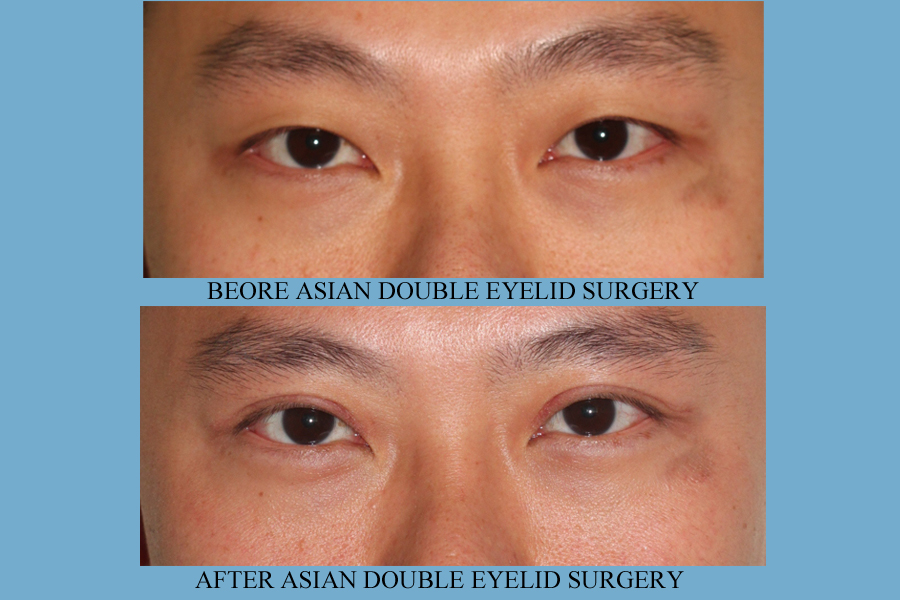
The asian upper eyelid is characterized by the complete absence of a lid fold or crease or, if present, a lid crease that is low and poorly defined. The reason that the lid fold is absent or weak in the asian eyelid is that the levator muscle (the muscle that opens the eyelid) does not attach to the undsurface of the skin. In the caucasian lid, the levator muscle does attach to the undersurface of the eyelid skin and when the muscle is activated, not only does the eye open, but the eyelid skin folds inward to form the crease (similar to the pleats on a roman shade when it is opened). To create an eyelid crease, the levator muscle must first be exposed by removing overlying skin, muscle and fat. Once this has been accomplished “fixation” sutures are placed between the skin and the levator muscle. When the healing process is complete, the skin along the line of “fixation” sutures becomes attached to the underlying levator muscle, thereby allowing a crease to form when the eyelid is opened.
This type of surgery is commonly performed using only local anaesthesia or a light conscious sedation in our private facial plastic surgery center in Vancouver, British Columbia. Sutures are removed after one week and patients typically are back to full activities within 10 to 14 days. More information can be found about this procedure on our website https://doctordenton.com/surgical-procedures/asian-cosmetic-surgery/
